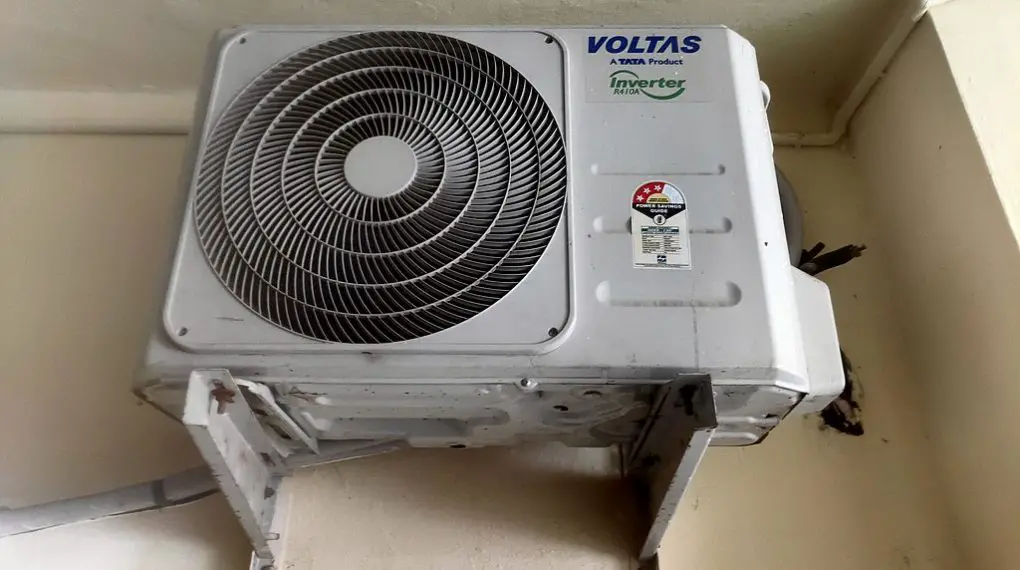Inside an air conditioner compressor, magic happens. Not the fantasy kind, but the type of magic that allows us to enjoy cool breezes inside our homes, even on the hottest of summer days. If you’re curious about how your air conditioner keeps you cool, read on!

Table of Contents
Diving Inside an Air Conditioner Compressor
An air conditioner (AC) compressor is akin to the heart of an AC system, with several key components working together to cool your space. Here’s a closer look at what goes on inside.
Core Components Inside an Air Conditioner Compressor
An AC compressor houses several key components, each performing a specific role in the refrigeration process. These components include the motor, piston, cylinder, and valves.
The Motor
The motor, sometimes referred to as the compressor motor, is the main driving force of the compressor. Its primary function is to convert electrical energy into mechanical energy, which it does by creating a rotating magnetic field.
This rotating field is what drives the motion of the piston within the compressor. The motor needs to be powerful enough to withstand the pressure of compressing the refrigerant gas and be designed to work efficiently under high-stress conditions.
The Piston and Cylinder
The piston and cylinder are crucial parts of the compressor’s mechanical system. The piston, driven by the motor, moves up and down inside the cylinder. When the piston moves down, it creates a vacuum inside the cylinder, which sucks in the refrigerant gas from the suction line.
When the piston moves up, it compresses the gas, increasing its pressure and temperature. The piston-cylinder assembly should be constructed with high precision to ensure the maximum efficiency of the refrigeration cycle.
The Valves
There are typically two types of valves in an AC compressor: suction and discharge valves. The suction valve opens when the piston moves down, allowing low-pressure refrigerant gas to enter the cylinder. When the piston moves up to compress the gas, the suction valve closes, and the discharge valve opens, allowing the high-pressure, high-temperature gas to exit the compressor and move to the condenser coil. These valves act as one-way gates, ensuring the refrigerant moves in the right direction.
Compressor Housing
Though not mentioned in your original article section, another essential part of an AC compressor is the housing. It’s the outer casing that holds all the internal components. It’s designed to protect the components from external elements and to contain any possible refrigerant leaks.
Check out these other related articles…
What Does AC Compressor Do? The Heartbeat of Your AC
Parts of an AC Compressor: A Detailed Guide
AC Compressor Noise: Your Easy Guide
AC Compressor Clutch Not Engaging: Why and How to Fix It
AC Compressor Kit: Your Ultimate Guide
The Refrigeration Cycle Inside an Air Conditioner Compressor
The refrigeration cycle is a crucial process that happens inside an air conditioner compressor. This cycle is composed of several sequential steps, specifically designed to transfer heat from one place to another, effectively cooling the desired area. Here’s a more detailed breakdown of this process:
Evaporation
The refrigeration cycle begins in the evaporator coil, which is typically located inside the building or space to be cooled. Here, the refrigerant starts as a low-pressure liquid. As the warm air from the room is blown over the evaporator coil, the heat causes the refrigerant to evaporate and absorb this heat, cooling the air in the process. As the refrigerant absorbs heat, it transforms into a low-pressure gas. This cool air is then circulated back into the room, resulting in a cooler space.
Compression
This low-pressure gas is then sent to the compressor. The compressor’s role is to compress this gas, which increases its pressure and temperature, turning it into a high-pressure, high-temperature gas. This is necessary for the subsequent condensation step. The compression of gases results in an increase in temperature due to the increased kinetic energy of the gas molecules.
Condensation
The hot, high-pressure gas then flows into the condenser coil, usually located outside the building. In the condenser, the gas releases its heat to the outside environment, facilitated by the flow of outside air over the condenser coil. As the refrigerant loses heat, it condenses and transforms back into a high-pressure liquid.
Reduction in Pressure
This high-pressure liquid refrigerant then passes through an expansion valve or some type of throttling device. This valve restricts the flow of the fluid and lowers its pressure as it leaves the valve. This sudden reduction in pressure causes the temperature of the refrigerant to drop significantly, and it returns to a low-pressure, cold liquid state.
Return to the Evaporator
This cold, low-pressure liquid refrigerant then returns to the evaporator coil to repeat the cycle. It absorbs the heat from the indoor air once again, providing a continuous source of cooling for the space.
It’s important to note that this cycle happens repeatedly, providing a consistent cooling effect for the building or space. It’s a precise and delicate process, and every step is essential for the air conditioner to work effectively.